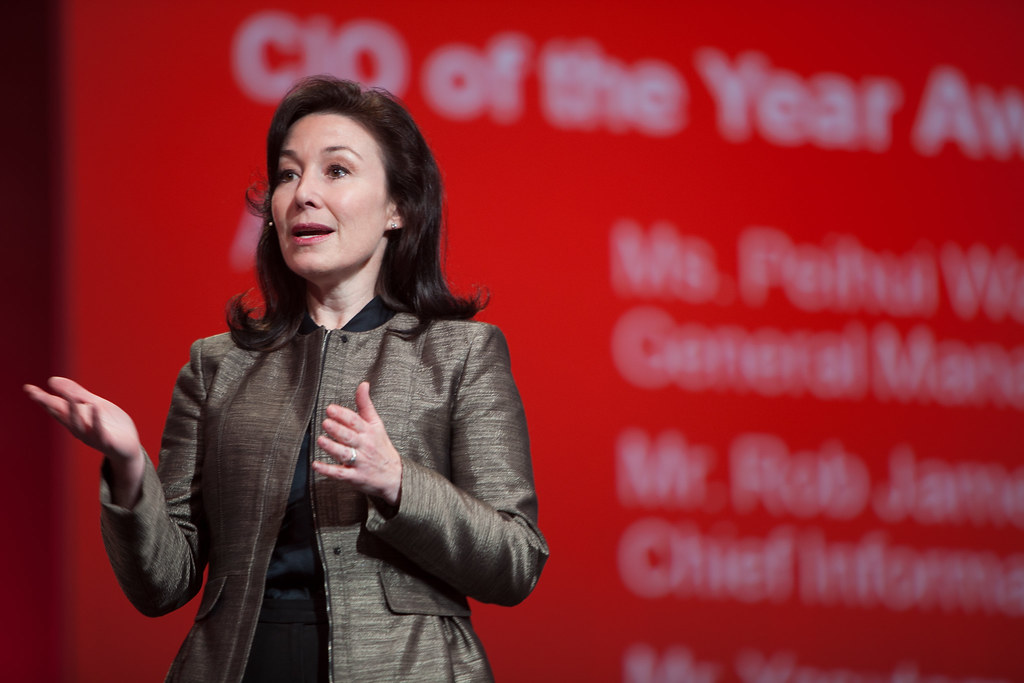 CLOUD
CLOUD
 CLOUD
CLOUD
 CLOUD
CLOUD
Updated:
Database giant Oracle Corp. delivered relatively strong fourth-quarter earnings today, beating estimates thanks in part to rapid growth in its cloud applications business.
The company reported earnings before certain costs such as stock compensation of $1.16 per share on revenue of $11.1 billion, up 1% from the same period a year ago. Wall Street had expected Oracle to report earnings of just $10.70 per share on revenue of $10.93 billion.
Given the tepid overall revenue growth — not to mention its inability to compete with the likes of Amazon Web Services Inc. and Microsoft Corp. in cloud infrastructure services — Oracle chose to emphasize growth in cloud applications. Cloud services and license support revenue came to $6.8 billion, while on-premises sales hit just above $2.5 billion.
“Our high-margin Fusion and NetSuite cloud applications businesses are growing rapidly, while we downsize our low-margin legacy hardware business,” Oracle’s co-Chief Executive Officer Safra Catz (pictured) told investors. The result of that shift away from commodity hardware to cloud applications, she added, was a quarterly operating margin of 47%, the highest in five years.
The Oracle Fusion enterprise resource planning and human capital management suite saw its revenue grow 32% in fiscal 2019, with NetSuite also growing at a similar rate.
In addition, Oracle reported adding 5,000 new Autonomous Database trials in the quarter. It added that it ended the year with around $38 billion in cash and marketable securities.
The numbers struck a chord with Oracle’s investors, as the company’s stock rose more than 4.5% in after-hours trading. Update: Shares rose even more in Thursday trading, closing up 8.2%, to $57.01.
The quarter wasn’t an entirely positive one, though, if some sources are to be believed. Recently, IEEE Spectrum reported that Oracle had shed an “unspecified number” of employees, citing anonymous sources in the company. It said the staff cuts were intended to “shift resources from older businesses into its all-important cloud-computing business.”
In addition, Oracle announced a new partnership with its rival Microsoft during the quarter, linking their public cloud platforms to form a unified front against Amazon Web Services Inc., which is a common rival.
Nomura Instinet analyst Christopher Eberle told CNBC these were not good signs, as they indicate that Oracle continues to “face an uphill battle in its broader cloud strategy and business model transition.”
The layoffs are indeed “problematic” and suggest that Oracle’s efforts in, and its view of the cloud may be shifting, analyst Charles King of Pund-IT Inc. told SiliconANGLE.
“The recent partnership Oracle announced with longtime competitor Microsoft also suggests a realignment,” King said. “Frankly, the deal could be good for both companies since its likely that the pair have thousands of enterprise customers in common that have no interest in abandoning either one’s platform and applications for the other.”
In any case, Catz chose to ignore those developments, instead pointing to technology license growth of 19% in the quarter and cloud license and on-premises license revenue growth of 15%, which she said makes it “abundantly clear” that customers are continuing to invest in the firm.
“I cannot stress enough the stability and growth of our base of customers quarter-after-quarter,” Catz said. “Our customers are maintaining and expanding their Oracle environment.”
Constellation Research Inc. analyst Holger Mueller said the numbers show Oracle’s transformation is moving along nicely, fueled by growth with its Autonomous Database.
“Customers are upgrading, even if they want to leave the Oracle ecosystem, due to the benefits of the Oracle Autonomous Database and the Exadata architecture,” Mueller said. “Partnerships like the surprising one with Microsoft this quarter will make it easier for enterprises to keep running the Oracle Database. As long as Oracle can keep this going, this market dynamic will make up for its shrinking hardware business and give the vendor moderate growth rates.”
Another analyst was less sanguine about Oracle’s cloud prospects and their impact on overall revenue. “One percent revenue growth isn’t anything to write home about when companies like Microsoft and Amazon have 20 time that,” said Patrick Moorhead, president and principal analyst at Moor Insights & Strategy. “And how can anyone trust the cloud number as it isn’t even GAAP [generally accepted accounting principles] since Oracle stopped reporting on cloud revenue awhile back?”
Mueller did say he was concerned that Oracle’s Applications business revenue amounted to less than 50% of its overall infrastructure sales, which is not where the company wants to be.
“Another concern is Oracle’s weakness in EMEA, where it has trailed in overall revenues during in all four quarters of the last fiscal year,” he added.
Still, investors probably won’t be too worried so long as Oracle’s bottom line beats their expectations, and in that regard there was more positive news with its guidance for the next quarter. Catz said fiscal first-quarter will grow by between 1% and 3% in constant currency, and that the company expects earnings of between 80 to 82 cents per share. Wall Street was looking for earnings of 80 cents per share, excluding certain items, on $9.36 billion in revenue, which would reflect 1.7% revenue growth.
“Oracle deserves kudos for coming on earnings, however modestly, despite known headwinds,” King said. “It also looks like Ellison and company are ready and willing to make some hard choices when it comes to their cloud business and to pursue new deals and opportunities, even if they appear counterintuitive so some observers. It’ll be interesting to see how the company fares through the rest of the year, and how quickly the Microsoft deal takes to bear fruit.”
THANK YOU